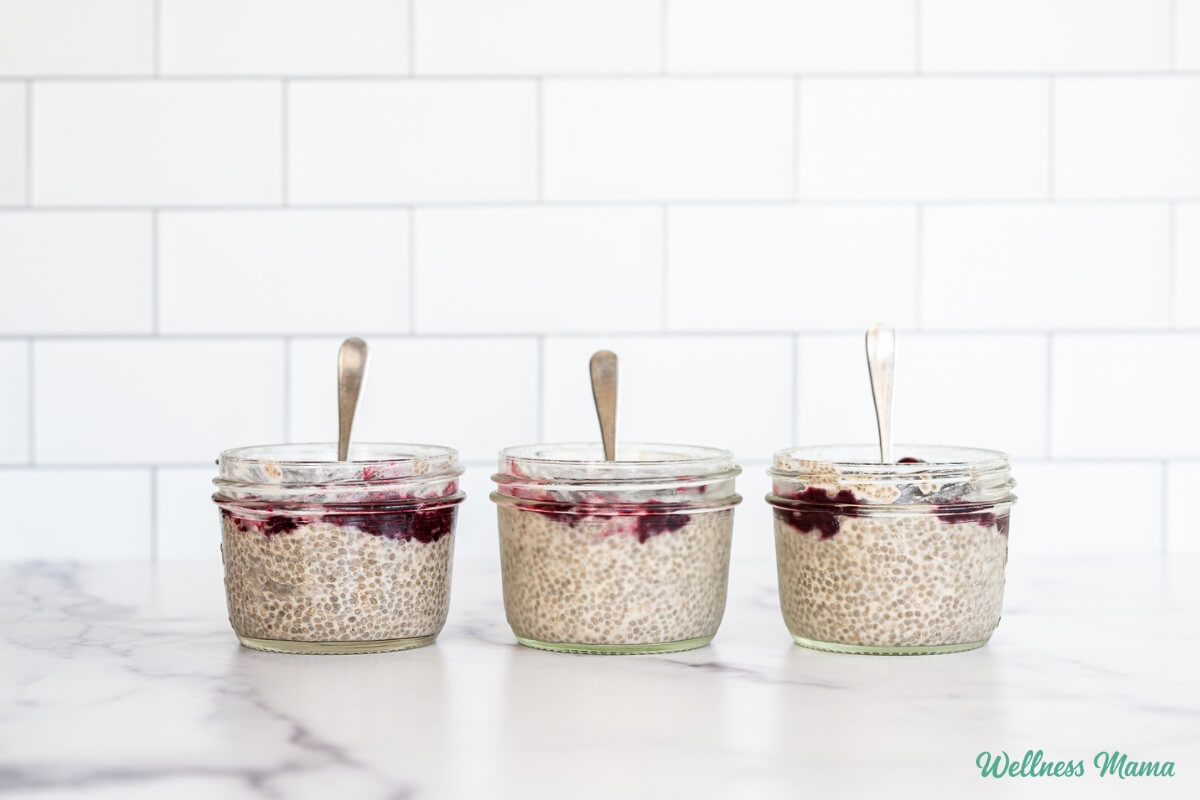Weight Loss For Your Abs Core Exercises
Are you looking to shed those extra pounds around your midsection? Look no further! In this article, we will explore the most effective core exercises that specifically target your abs, helping you achieve your weight loss goals. say goodbye to stubborn belly fat and say hello to a toned and sculpted midsection. Get ready to sweat as we delve into the world of abs core exercises that will transform your body and boost your confidence. Get ready to unleash your full potential and embark on a journey towards a healthier and fitter you!

Benefits of Weight Loss for Your Abs
Improved appearance
Losing weight can have a significant impact on the appearance of your abs. As you shed excess pounds, those layers of stubborn fat covering your abdominal muscles will gradually disappear, revealing a more defined and toned midsection. This can boost your self-confidence and make you feel more comfortable in your own skin. A trimmer waistline and sculpted abs can also enhance your overall physique, giving you a lean and athletic look.
Increased strength and stability
Weight loss goes hand in hand with strengthening your abs core muscles. As you engage in exercises and adopt a healthy lifestyle, you’ll not only lose fat but also build muscle in your midsection. This increased muscle mass can lead to improved strength and stability, making everyday tasks easier to accomplish. A strong core is not only beneficial for aesthetics but also for maintaining good posture, reducing the risk of injuries, and supporting your body during various movements.
Reduced risk of health issues
Carrying excess weight, especially around the midsection, can increase your risk of developing a range of health problems. This includes conditions such as heart disease, diabetes, high blood pressure, and certain types of cancer. By losing weight and shedding fat from your abdominal area, you can significantly decrease your likelihood of developing these health issues. Weight loss can also improve your cardiovascular health, boost your metabolism, and enhance your overall well-being.
Understanding Your Abs Core
Anatomy of the abs core
The abs core, also known as the abdominal core, is a group of muscles located in the midsection of your body. It consists of several muscle groups, including the rectus abdominis (commonly referred to as the “six-pack”), the transverse abdominis, the internal and external obliques, and the erector spinae muscles. Together, these muscles provide stability, support, and movement for your entire body.
Functions of the abs core
The abs core plays a crucial role in various movements and activities. It acts as a stabilizer during exercises and everyday tasks, such as lifting heavy objects, twisting, bending, and maintaining proper posture. Additionally, a strong abs core contributes to better athletic performance, efficient movement patterns, and reduced risk of back pain and injuries.
Common misconceptions about abs
There are many misconceptions surrounding abs and achieving a toned midsection. One common myth is that doing countless sit-ups or crunches alone will result in visible abs. While these exercises can help strengthen your core, they are not sufficient for getting rid of stubborn belly fat. Weight loss through a combination of a healthy diet, cardiovascular exercises, and targeted core workouts is necessary to reveal and define your abs.
Importance of Core Exercises for Weight Loss
Strengthening the abs core
Core exercises play a crucial role in weight loss, as they target the abs muscles and help strengthen them. By engaging in exercises that focus on the abs core, such as planks, crunches, and leg raises, you can increase the muscle mass in this area. As muscle is denser than fat, having a higher muscle percentage can increase your metabolism and contribute to burning more calories even at rest. This can ultimately aid in weight loss and toning your midsection.
Enhancing overall fat burn
Core exercises are not only effective at strengthening your abs but also at burning calories and reducing overall body fat. When you perform exercises that engage the abs core, your body recruits multiple muscle groups, leading to a higher caloric expenditure. Additionally, compound movements that involve the core, such as mountain climbers or Russian twists, require more energy and can contribute to a higher rate of fat burn.
Improving posture and alignment
A strong abs core is essential for maintaining good posture and proper alignment. When your abs core muscles are weak, you may slouch or lean forward, leading to poor posture. This can result in various issues, including back pain, muscle imbalances, and decreased mobility. By incorporating core exercises into your weight loss routine, you can strengthen your abs core and improve your posture, leading to a taller, more confident stance.

Effective Abs Core Exercises for Weight Loss
Plank variations
Planks are one of the most effective exercises for targeting the abs core. To perform a basic plank, assume a push-up position with your forearms on the ground and your body in a straight line. Hold this position for as long as you can, engaging your abs and squeezing your glutes. As you become more proficient, you can incorporate variations such as side planks, plank jacks, or plank with leg lifts to challenge your core muscles further.
Crunches and sit-ups
Crunches and sit-ups are classic core exercises that can help tone your abs and contribute to weight loss. To perform a crunch, lie on your back with your knees bent and feet flat on the ground. Place your hands behind your head and lift your upper body toward your knees, engaging your abs. For sit-ups, the movement is similar, but you lift your entire torso off the ground until your elbows touch your thighs. Remember to perform these exercises with proper form and avoid straining your neck or lower back.
Russian twists
Russian twists are an effective exercise for targeting the oblique muscles and engaging the entire abs core. To perform a Russian twist, sit on the ground with your knees bent and feet lifted off the floor. Lean back slightly, engage your abs, and twist your torso from side to side, touching the ground on each side. For an added challenge, you can hold a weight or medicine ball in your hands while performing the twists.
Leg raises and flutter kicks
Leg raises and flutter kicks are exercises that target the lower abs and can be effective for weight loss. To perform leg raises, lie on your back with your hands by your sides. Keep your legs straight and lift them off the ground until they are perpendicular to the floor. Slowly lower your legs back down, engaging your lower abs. Flutter kicks involve keeping your legs straight and kicking them up and down in quick, small motions, engaging your entire abs core.
Bicycle crunches
Bicycle crunches are a dynamic exercise that targets the entire abs core, including the obliques. To perform bicycle crunches, lie on your back with your hands behind your head and your knees bent. Lift your shoulder blades off the ground and bring your right elbow to your left knee while extending your right leg. Repeat the motion, alternating sides in a pedaling motion. Focus on engaging your abs and twisting your torso as you perform the exercise.
Mountain climbers
Mountain climbers are a cardio-intensive exercise that engages your abs core while elevating your heart rate. To perform mountain climbers, assume a push-up position with your hands under your shoulders and your body in a straight line. Bring one knee toward your chest, then quickly switch legs, mimicking a running motion. Continue alternating legs at a brisk pace, focusing on keeping your core tight and engaging your abs.
Tips for Performing Abs Core Exercises
Maintaining proper form
Proper form is key when performing abs core exercises to maximize their effectiveness and prevent injuries. Pay attention to your body alignment, engage your abs, and avoid straining your neck or lower back. If you are unsure about the correct form, seek guidance from a fitness professional or watch instructional videos to ensure you are performing the exercises correctly.
Starting with low repetitions and progress gradually
If you are new to abs core exercises or have been inactive for a while, it is important to start slowly and gradually increase the intensity. Begin with a low number of repetitions and focus on maintaining proper form. As your strength improves, gradually increase the number of repetitions or add variations to challenge your abs core.
Breathing techniques
Proper breathing techniques can help enhance the effectiveness of abs core exercises. As a general rule, exhale during the exertion phase of the movement, such as when lifting your torso or engaging your abs. Inhale during the relaxation phase, allowing your ribcage to expand fully. Focusing on your breath can help you maintain control, engage your abs properly, and improve your overall performance.
Incorporating variations and challenges
To continually challenge your abs core muscles and prevent plateauing, it is important to incorporate variations and progressions into your workout routine. As you become more proficient in basic exercises, explore different variations or add additional resistance to increase the difficulty level. This can include using stability balls, resistance bands, or weights to engage your abs core in new and challenging ways.
Creating a Well-Rounded Workout Routine
Including cardio exercises
While core exercises are essential for weight loss and toning your abs, it is important to create a well-rounded workout routine that includes cardiovascular exercises. Cardio exercises, such as running, cycling, swimming, or dancing, can help burn calories, increase your heart rate, and contribute to overall fat loss. Aim for at least 150 minutes of moderate-intensity cardio each week to maximize your weight loss efforts.
Incorporating strength training
In addition to core exercises, strength training is crucial for weight loss and building lean muscle mass. Resistance exercises targeting other muscle groups, such as squats, lunges, and shoulder presses, can help increase your metabolism and burn more calories. Strength training also enhances overall muscle tone and contributes to a balanced physique. Aim for two to three sessions of full-body strength training each week, allowing ample rest and recovery between sessions.
Balancing with rest and recovery
While it may be tempting to push yourself to the limit every day, it is important to prioritize rest and recovery in your workout routine. Your muscles need time to repair and rebuild in order to grow stronger. Incorporate rest days into your schedule and listen to your body’s signals to prevent overtraining and reduce the risk of injuries. Adequate sleep, proper nutrition, and stretching can also contribute to optimal recovery.
Addressing other muscle groups
While focusing on your abs core is important, don’t neglect other muscle groups in your body. A well-rounded workout routine that includes exercises for the legs, arms, back, and chest can help create a balanced physique and improve overall strength and fitness. Engaging in compound movements that target multiple muscle groups simultaneously, such as push-ups or squats, can be especially effective for weight loss and building muscle.
Eating Right for Weight Loss
Calorie deficit and portion control
Weight loss is not solely dependent on exercise; it is equally important to maintain a calorie deficit through proper nutrition. To create a calorie deficit, you must consume fewer calories than your body burns. This can be achieved by tracking your calorie intake, making healthier food choices, and practicing portion control. Reduce your intake of high-calorie, processed foods, and focus on consuming nutrient-dense foods that provide essential nutrients while keeping calories in check.
Incorporating lean proteins and healthy fats
Protein is essential for building and repairing muscles, and it also helps keep you feeling full and satisfied. Incorporate lean protein sources such as chicken, fish, tofu, or legumes into your meals. Healthy fats, such as avocados, nuts, and olive oil, can also contribute to satiety and provide essential nutrients. Aim for a balanced diet that includes a variety of nutrient-rich foods from all food groups.
Choosing nutrient-dense foods
When striving for weight loss, it is important to choose nutrient-dense foods that provide maximum nutrition and minimal calories. Focus on incorporating plenty of fruits, vegetables, whole grains, and lean proteins into your diet. These foods are packed with vitamins, minerals, fiber, and antioxidants, keeping you nourished and satisfied while supporting your weight loss goals.
Staying hydrated
Proper hydration is vital for overall health and can also aid in weight loss. Drinking an adequate amount of water can help regulate your metabolism, control appetite, and support digestion. Make it a habit to drink water throughout the day, especially before meals to help reduce overeating. You can also incorporate hydrating foods, such as watermelon or cucumbers, into your diet to further increase your water intake.
Additional Tips for Weight Loss
Getting enough sleep
Adequate sleep plays a significant role in weight loss and overall well-being. Lack of sleep can disrupt hormonal balance, increase appetite, and negatively impact your ability to make healthy food choices. Aim for seven to nine hours of quality sleep each night to support your weight loss efforts and promote optimal recovery.
Managing stress levels
Chronic stress can lead to emotional eating, cravings, and weight gain. It is important to find healthy ways to manage stress, such as practicing mindfulness, engaging in relaxation techniques, or participating in activities you enjoy. Find what works best for you and incorporate stress management techniques into your daily routine to support your weight loss journey.
Avoiding sugary and processed foods
Highly processed and sugary foods are often low in nutrients and high in empty calories. These types of foods can lead to weight gain and hinder your weight loss progress. Limit your intake of sugary snacks, desserts, sodas, and processed snacks. Instead, opt for whole, unprocessed foods that provide essential nutrients and support your overall health.
Tracking progress and adjusting goals
Keep track of your progress throughout your weight loss journey. This can be done through measurements, progress photos, or journaling. Regularly evaluate your goals and make adjustments as needed. Celebrate small victories, such as reaching a fitness milestone or sticking to your exercise routine, and use those moments to stay motivated and encouraged.
Maintaining Consistency for Long-Term Results
Setting realistic and achievable goals
When embarking on a weight loss journey, it is important to set realistic and achievable goals. Aim for gradual and sustainable progress rather than quick fixes. This will help you stay motivated, focused, and committed to long-term lifestyle changes. Consult with a fitness professional or nutritionist to help you set personalized goals based on your individual needs and capabilities.
Finding motivation and accountability
Maintaining motivation throughout your weight loss journey can be challenging, but it is crucial for long-term success. Find what motivates you personally, whether it’s a desire to improve your health, enhance your appearance, or set a positive example for your loved ones. Additionally, consider finding an accountability partner, such as a workout buddy or a supportive friend or family member, to keep you on track and hold you accountable.
Sticking to a regular exercise routine
Consistency is key when it comes to achieving and maintaining weight loss. Create a workout schedule that works for you and stick to it as much as possible. Treat exercise as a non-negotiable part of your day, just like eating or sleeping. Even on days when motivation is low, commit to at least a few minutes of exercise. Remember that every small effort adds up and contributes to your progress.
Celebrating milestones and rewarding yourself
As you reach various milestones and achieve your weight loss goals, make sure to celebrate and reward yourself. This will help to reinforce positive behavior and keep you excited about your progress. However, choose rewards that align with your health and fitness goals, such as treating yourself to a new workout outfit, booking a massage, or planning a fun outdoor activity.
Consulting a Professional
Seeking advice from a trainer or fitness expert
If you are new to exercise or have specific weight loss goals, it may be beneficial to seek advice from a certified fitness professional or personal trainer. They can guide you through proper form, suggest effective exercise routines, and provide the motivation and support you need to stay on track.
Getting a comprehensive fitness assessment
A comprehensive fitness assessment can provide valuable insights into your current fitness level, body composition, and individual needs. This assessment may include measurements, flexibility tests, and cardiovascular assessments. With this information, you can create a personalized weight loss plan that takes into account your specific strengths, weaknesses, and goals.
Addressing any underlying health concerns
Before starting any weight loss or exercise program, it is important to address any underlying health concerns you may have. If you have pre-existing medical conditions or are unsure about your health status, consult with your healthcare provider before making any significant changes to your diet or exercise routine. They can provide guidance and ensure that your weight loss plan is safe and suitable for your individual circumstances.
Customizing a weight loss plan
A customized weight loss plan can provide you with a roadmap to success. It takes into account your unique goals, preferences, and lifestyle factors. Consider working with a registered dietitian or nutritionist to develop a customized meal plan that supports your weight loss goals while ensuring proper nutrition and balanced eating habits. A professional can also help you create an exercise plan that is tailored to your needs and abilities.
In conclusion, weight loss is not only beneficial for achieving a trimmer waistline and sculpted abs but also for improving overall health, strength, and stability. By understanding the anatomy and functions of the abs core, incorporating core exercises into your routine, following proper form and techniques, and maintaining a well-rounded approach to fitness and nutrition, you can achieve long-term results. Remember to consult with professionals, celebrate milestones, and prioritize consistency and self-care throughout your weight loss journey.




1 comment